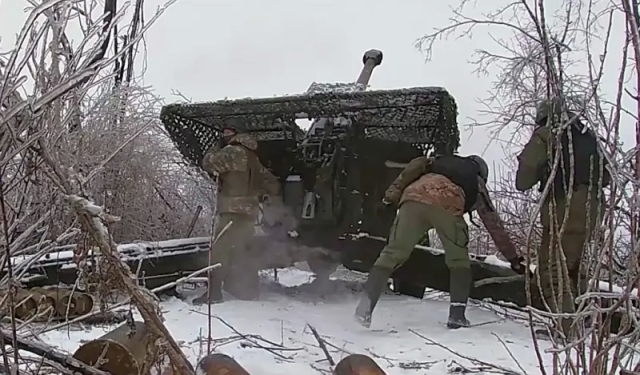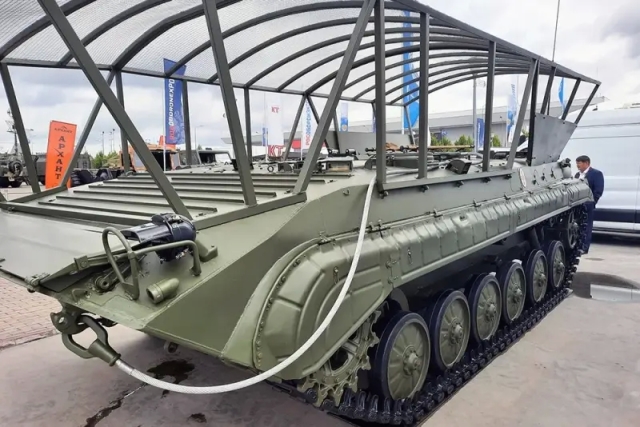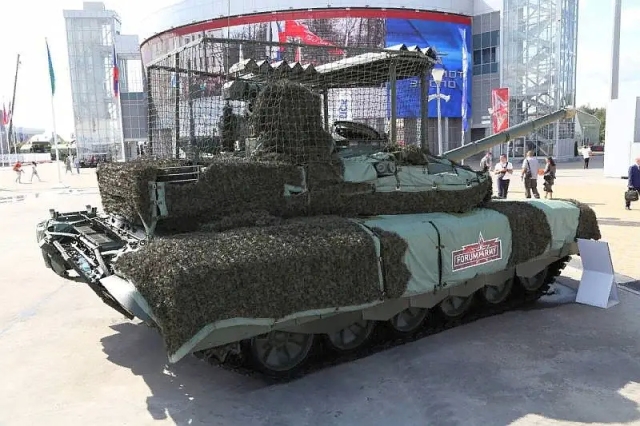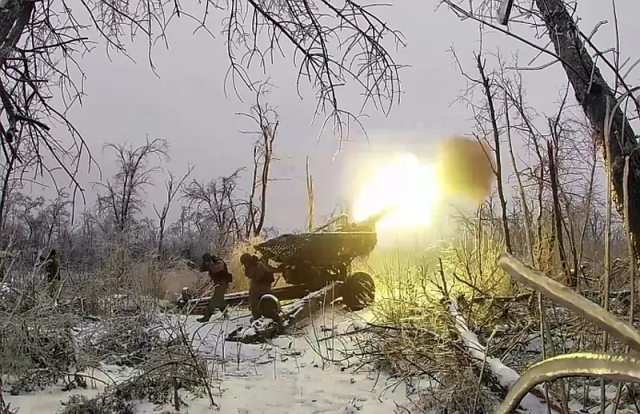
Image source: topwar.ru
The armed conflict in Ukraine is seriously changing many paradigms and well-established ideas about the ways and methods of warfare in modern large-scale, and local, military conflicts. The current military and experts pay special attention to the role of drones of various modifications and classes, the presence of which becomes crucial both for conducting reconnaissance and defeating manpower, armored vehicles, and indeed any enemy targets.
Special emphasis is placed on the kind of efficiency of using kamikaze drones, which quite easily disable disproportionately more expensive and difficult-to-manufacture artillery installations, armored vehicles and even air defense installations, which seem to be designed to destroy aerial targets, including UAVs. Equally effective, experienced operators hit all kinds of targets with the help of ammunition dropped from conventional commercial drones.
New threats forced us to invent protection against them literally on the fly. It is not known for certain who was the first, Russian or Ukrainian servicemen, to independently install anti-drone protective visors on armored vehicles. However, a few months after the start of the special operation, more and more armored vehicles and self-propelled guns of both the Armed Forces of Ukraine and the Armed Forces of the Russian Federation began to acquire similar protective structures, which were dubbed "mangalas". Although the idea is not new, for the first time protective visors appeared on tanks of the Russian army in 2021. Then military experts laughed at this invention.
There are many photos and videos on the web, in which, for example, the Ukrainian BMP is literally put in a cage made of homemade anti-drone protection, welded on all sides except the bottom. This "grill" looks rather clumsy and even ridiculous, but there is some logic in circular protection, because barrage ammunition is capable of attacking armored vehicles from almost any angle.
The effectiveness of this protection was eventually recognized by the Russian Ministry of Defense. New methods of the Russian military department to protect tanks and armored personnel carriers from drones were demonstrated at the Army 2023 forum. Already serial solutions have been improved by Russian military engineers. In the officially published methods of the Ministry of Defense for the protection of equipment from drones, it is proposed to equip armored personnel carriers and tanks with modules for additional protection of the tower roof and protective nets, as well as equipping armored vehicles with means of electronic suppression of control and navigation channels, electronic systems of FPV drones.

Image source: topwar.ru
Armored personnel carrier based on BMP-1 with a protective screen against attacks from above at the Army-2023 forum
The factory production of anti-drone protection has introduced serious additions to the design compared to artisanal designs. In particular, the tank protection samples shown on the forum make it possible to quickly dismantle the visor, which is not welded to the armor, but is bolted. The presence of folding flaps above the gunner's and commander's hatches, equipped with a metal mesh to reduce their weight, simplify their lifting and lowering. In some modifications, an anti-cumulative grid is provided, which protects the car from the arrival of FPV drones from the sides.

Image source: topwar.ru
The infantry does not lag behind the mechanized formations of the Armed Forces of the Russian Federation. Dugouts, trenches, firing points and other locations are covered by soldiers with metal and plastic nets, which, in addition to protecting against UAVs and VOG, also serve as a disguise. In the rear, Ural craftsmen generally launched the production of anti-drone blankets. This type of equipment is used in the special operation zone to protect fighters from thermal imagers and drones, as well as to mask dugouts and sniper positions.
Having covered himself with this "invisibility cloak" at night, the fighter becomes indistinguishable from the enemy's thermal imagers. The production of blankets was put on stream by volunteers in one of the sewing enterprises of Yekaterinburg, they are supplied free of charge to the soldiers at the front in their own zone.
There is an offer on the Internet from a private Russian company for the sale of a protective fence to cover objects from kamikaze drones with the effect of radio shielding and masking from detection using a thermal imager. The device is a network stretched around the protected object, raised to a predetermined height using powerful telescopic masts. A protective structure can be erected using both rope and metal nets. The description notes that the protective network has already proven itself well during a special military operation.
Image source: topwar.ru
But towed guns, unlike self-propelled guns, until recently did not have additional stationary protection against drone attacks. And this is despite the fact that in case of detection of a weapon by enemy aerial reconnaissance, it takes a considerable time to change positions, which increases the risks of being attacked, including by drones of both the kamikaze type and equipped with dropped ammunition.
However, progress multiplied by ingenuity does not stand still in combat conditions. Just yesterday, the Ministry of Defense of the Russian Federation showed the work of a 152-mm howitzer 2A65 "Msta-B" with an anti-drone visor from the 1065th Guards Artillery Regiment of the Airborne Forces, which is smashing the enemy in the area of Artemovsk.

Image source: topwar.ru
In the standard version, the gun does not have such protection. In addition to an additional metal shield in the upper part, which covers the calculation of the howitzer from a frontal air attack, the gun is covered with a soft mesh. Previously, towed guns of the Armed Forces of the Russian Federation with such additional protection from enemy UAV attacks were not noticed.
